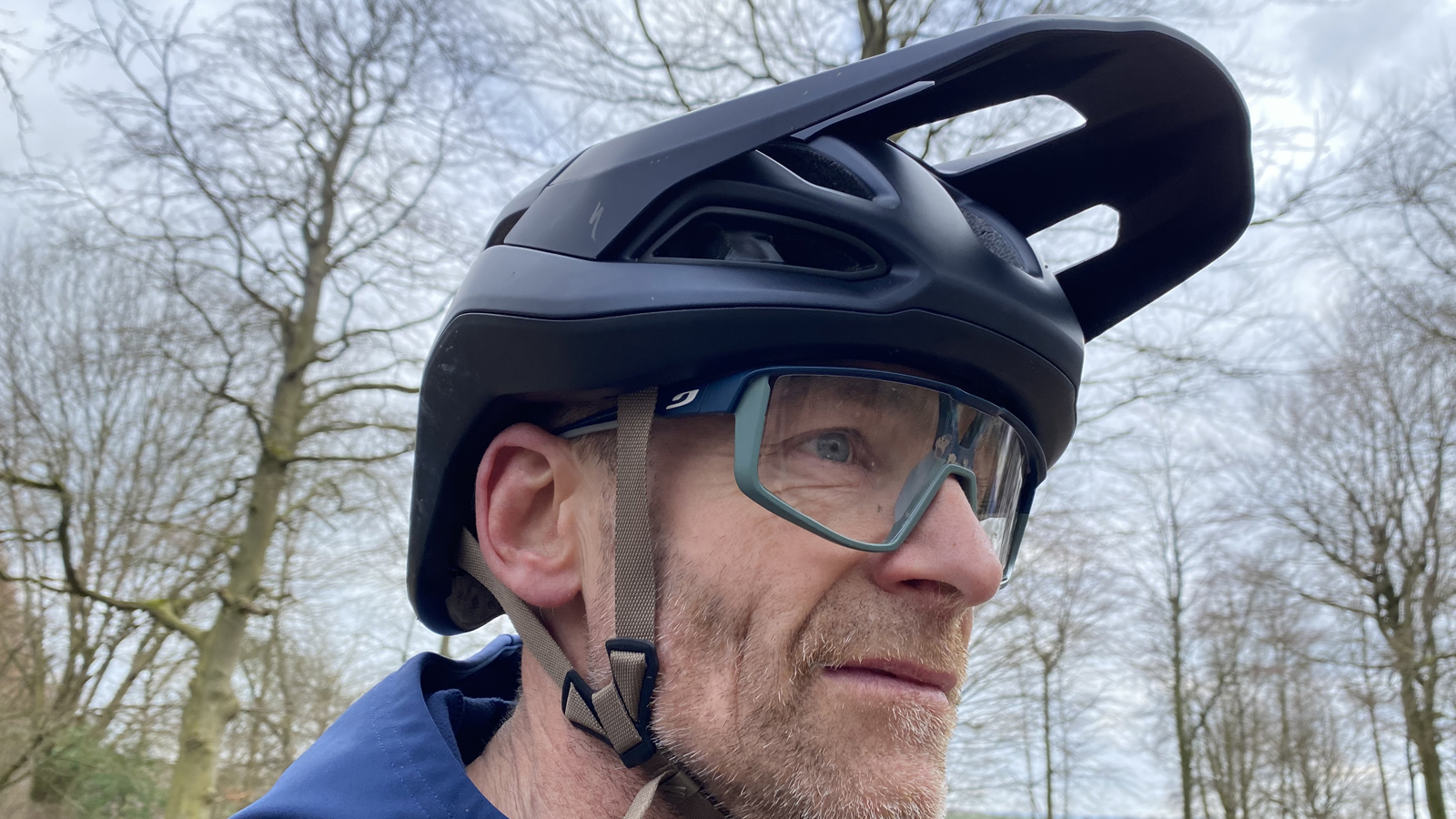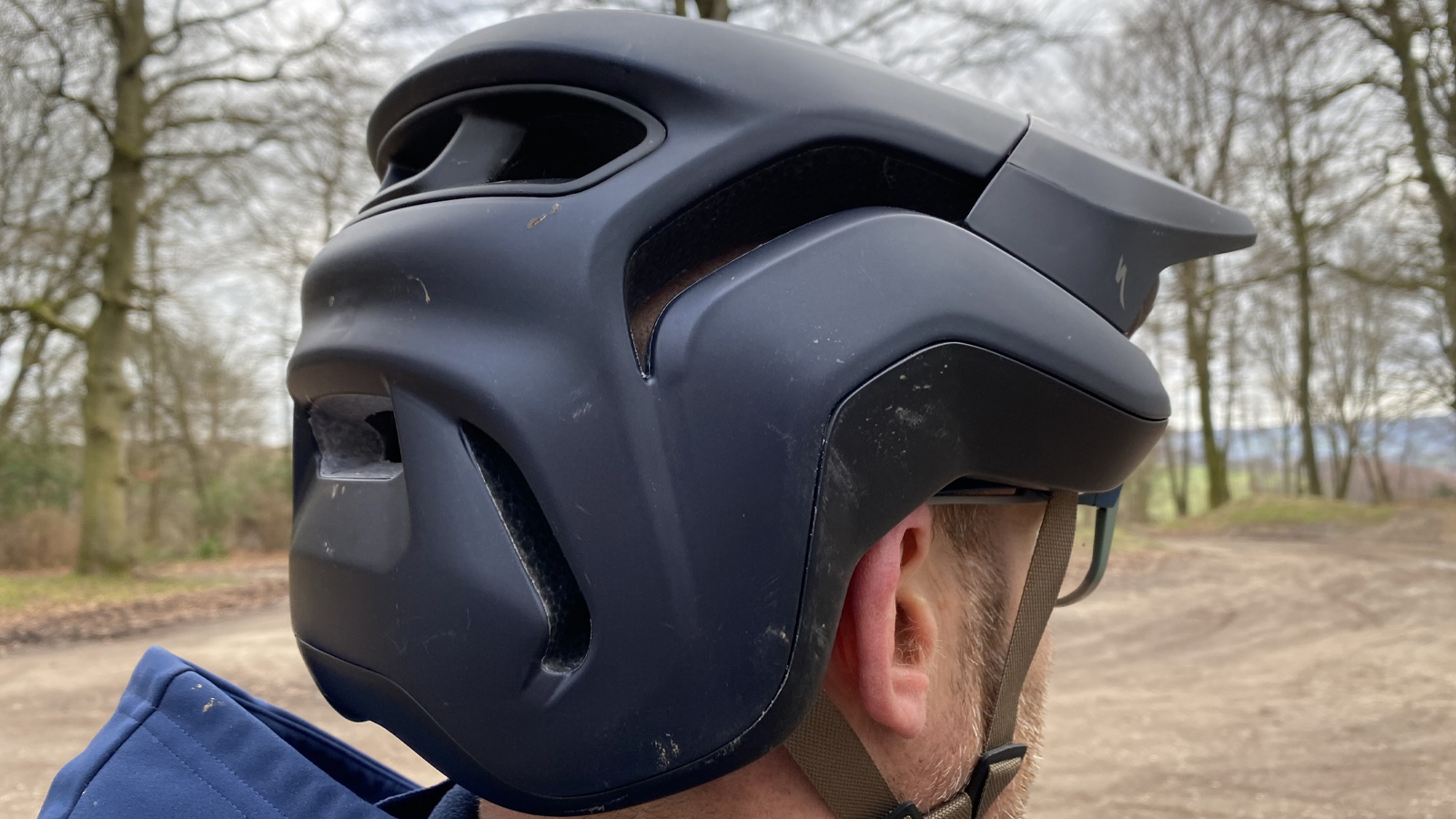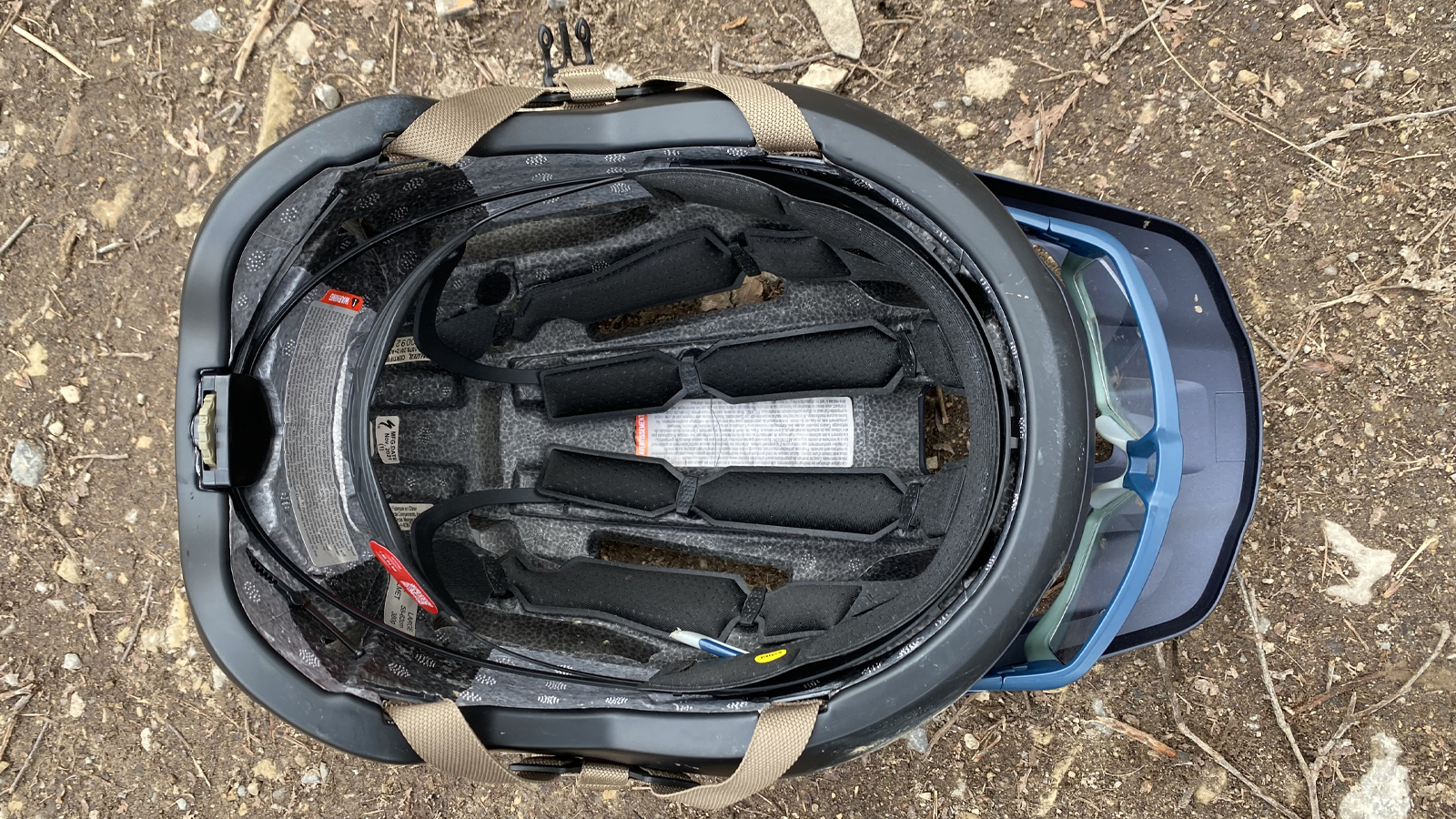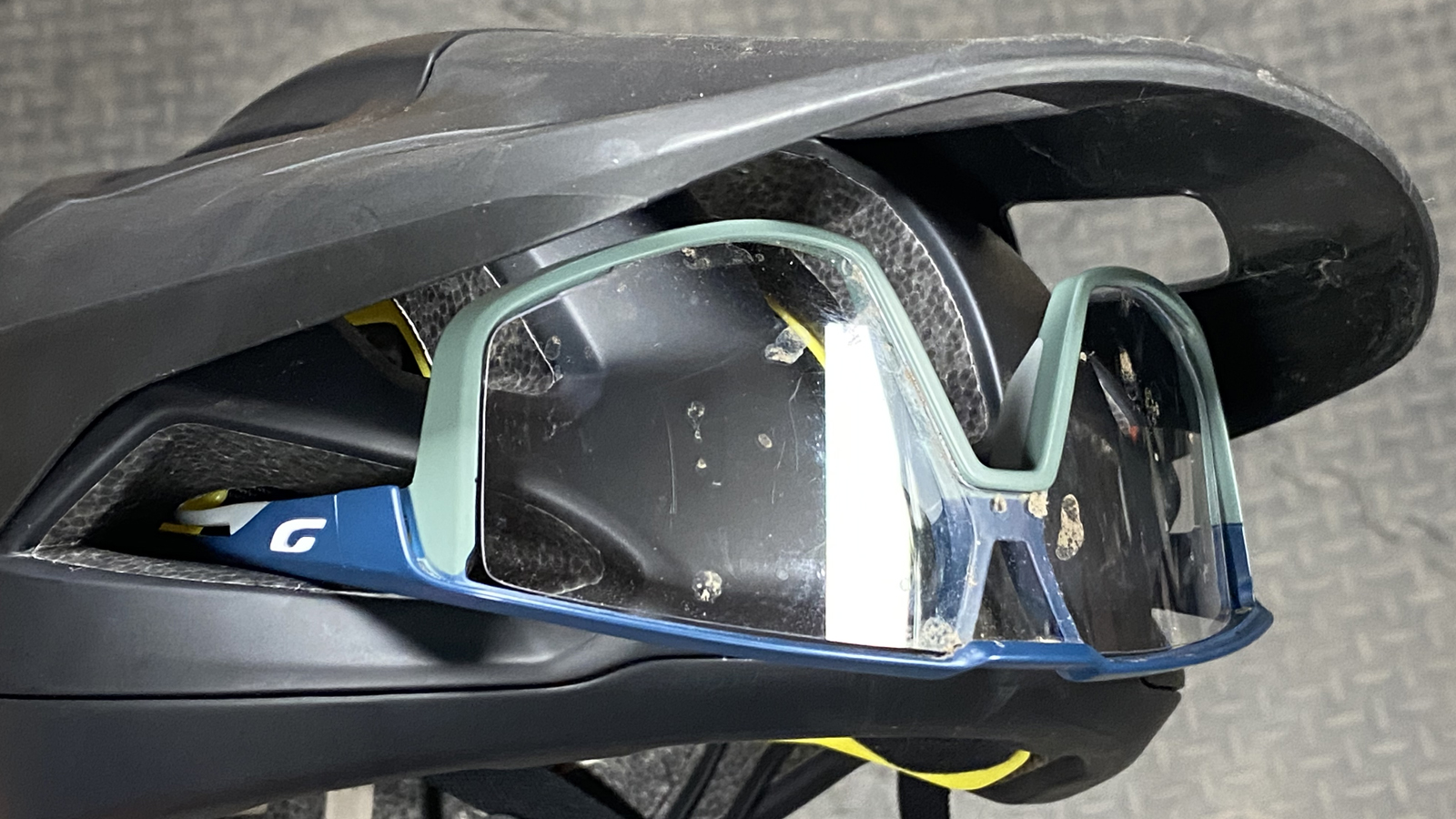Bike Perfect Verdict
Ambush 2 delivers deep-dish protection, impressive ventilation, neat fit and glasses stowage features in tons of colors for high, fixed visor fans
Pros
- +
Extended, deep coverage
- +
Great venting at speed
- +
Secure, tilt adjustable fit
- +
Outstanding optics storage
- +
Fixed, no fuss visor
Cons
- -
Fixed, no shade visor
- -
Air con is speed dependent
- -
ANGI beacon is an extra
- -
No goggle strap gripper
Why trust BikePerfect
Specialized has already bracketed the trail and enduro/DH ends of the refreshed helmet range with the Tactic and Gambit. The new Ambush 2 brings the same styling, venting theory and MIPS SL brain protection to the premium enduro/hardcore trail category.
For more helmets in this bracket, check out our round-up of the best MIPS mountain bike helmets.

Design
If Marvel did helmet design teams they’d likely assemble a team similar to Specialized’s new lid creation crew – although tight-fitted leotards and capes were sadly missing from the multi-hero video presentation Spesh recently gave us. The wisdom of over 60 years of combined experience saw the brand flip the usual design process inside out. This starts with the cooling flow and airspace it wanted over the rider’s skull and then computer flow modeling the channels and vents needed to make it happen. That’s why Ambush 2, Tactic, Gambit and the new, more economical Camber all share a very similar look with big front vents gulping air in under a broad central band. Fore and aft ribs underneath mean uninterrupted airflow from these vents and the two on the outer top of the helmet. The two outside brow vents link via more internal channels to signature hooked vents over the ears before it gets drawn towards the relatively small upper and lower exhaust vents on the deep-dish rear.
The team also worked the design of the safety aspects backwards from FEA modeling of the most common impacts. Dual-density EPS foam manages different impact profiles and together with the ultra-stripped rear (the pads are essentially elastic banded individually into the helmet on Velcro dots rather than fitted to a sliding sheet) MIPS SL energy dissipation system means the Ambush 2 gets a maximum safety rating from the Virginia Tech independent testing lab.

The hard shell is also fully wrapped for cosmetic protection and the dial for the SBC Integrated Fit cradle is buried in the body of the helmet – not positioned on the harness itself. There’s also a mount point for the ANGI crash communication sensor, though that’s now an aftermarket add-on rather than provided ‘free’ as it was with the original Ambush.The complimentary contrast straps are anchored in the lower edge of the helmet to make it easy to put on and reduce contact, while the broad splitters can be adjusted fore and aft depending where your ears are on your skull. The rear cradle can also be adjusted up and down to change the angle of the Ambush on your head – so it hopefully won’t knock on big specs even if you’ve got a shallow forehead or tall nose. There’s no height adjustment of the splitters though and the buckle is a simple snap lock not a magnetic slider clasp.
Specialized’s helmet dream team spent several weeks trying to design the perfect glasses stowage system. The team played with various designs and durometers for the small rubber-sprung flaps and entry ramps inside the brow vents that splay arms out slightly as you push them in and then soft lock to stop them sliding back out again. The need for optics space and synced styling also sees the visor slid high up on the crown, so while it’s a long beak it doesn’t actually overhang the brow of the Ambush. It’s also fixed rather than adjustable, so weight and potential impact concentration risk of the anchor hardware is minimal and it’ll break off easily in a crash. Big vents match up with those on the helmet front. If you’re a goggles not glasses fan then there’s a ridge between the exhaust vents where the strap should sit, but there’s no rubber retainer strips.

The complimentary contrast straps are anchored in the lower edge of the helmet to make it easy to put on and reduce contact, while the broad splitters can be adjusted fore and aft depending on the positioning of your ears. The rear cradle can also be adjusted up and down to change the angle of the Ambush on your head – so it hopefully won’t knock on big specs even if you’ve got a shallow forehead or tall nose. There’s no height adjustment of the splitters though and the buckle is a simple snap lock not a magnetic slider clasp.
Performance
Once you’ve stopped looking for the adjustment dial on the cradle (remember, it’s hidden in the shell) and wrestled the Trifix splitters backwards or forwards to sit under your ears, the Ambush gives a secure and comfortable fit. At 380g it’s a reasonable weight for a deep dish helmet and if you’re moving fast the airflow is impressive. The vents on the peak mean here’s no reduction in flow even if you’re head down and sprinting either.
At more moderate or properly slow climbing speeds there’s less heat radiation than with more open design lids - and the small exhaust vents (compared to the fan of six deep slots on the original Ambush) don’t supercharge the air-con quite as well. That meant we weren’t surprised when we asked the team if they’d used a thermal headform to check actual head temperature and they replied that they’d just used computational airflow modeling. That certainly doesn’t mean it’s a hot helmet, but it’s not miraculous in its breeziness and obviously the more hair you have to interrupt airflow through those inner channels and small exhaust vents the more it's compromised. You also need to be careful of goggle straps sitting too high or too low and closing the exhaust slots, too.

The glasses stash feature is a great addition though. Not only does it splay the arms out so they don’t dig into your temples, but the tunnels are big enough to handle fat 3D arms on older Oakley models if you’re a retro hipster. They hold firm with no rattle and even when we had some creep on rowdy descents – possibly because we hadn’t pushed the glasses fully home – the inverted lens sits just in your upper eyeline to provide some wind protection and prove they’re not moving anymore.
The high mount point of the visor means there’s no sign of that in your eye-line though, so, apart from potentially intercepting rain that’s heading for your face at slower speeds, it’s largely decorative. Not everyone is going to like the lack of adjustment either, but it won’t get floppy or rattly over time or flip up and create an air brake without you realizing. According to Specialized, high and fixed is what nearly all its athletes, ambassadors and other riders it quizzed wanted though, so maybe moaning about non-projecting visors is just something that’s miserable weather-specific. Plenty of solid and split color options will stop you looking dorky too, although XS or XL headed riders will have to opt for the cheaper Camber helmet.
Verdict
There are loads of deep-dish helmet options now, but the redesigned Ambush 2 definitely deserves a place right up in the rankings. It’s relatively light and has great airflow at higher speeds. Fit is secure, widely adjustable and it hits the highest safety standards for an open face helmet. There are plenty of colors and Specialized has really made a top job of looking after your stowed specs. It’s not as obviously breezy at slow speeds though and while the fixed, high visor has safety and security advantages it’s more decorative than weather proofing in terms of performance.
Ambush 2 Tech Specs
- Price: £150, $180, €195, $208 Aus
- Weight: 380g (Large 58-62cm)
- Sizes: S, M, L
- Colors: White sage, Wild dove grey, Deep marine, White, Black, Red

Guy Kesteven has been working on Bike Perfect since its launch in 2019. He started writing and testing for bike mags in 1996. Since then he’s written several million words about several thousand test bikes and a ridiculous amount of riding gear. He’s also penned a handful of bike-related books and he reviews MTBs over on YouTube.
Current rides: Cervelo ZFS-5, Specialized Chisel, custom Nicolai enduro tandem, Landescape/Swallow custom gravel tandem
Height: 180cm
Weight: 69kg

